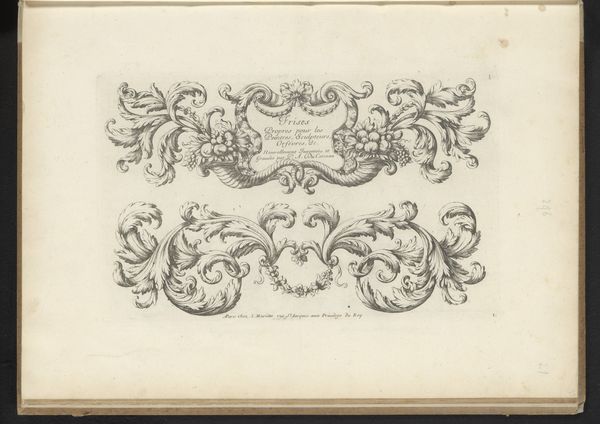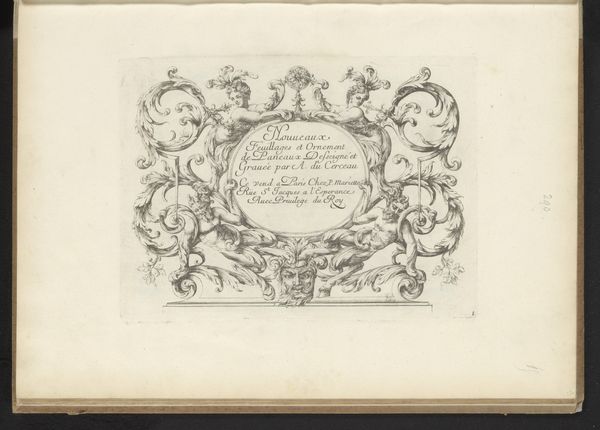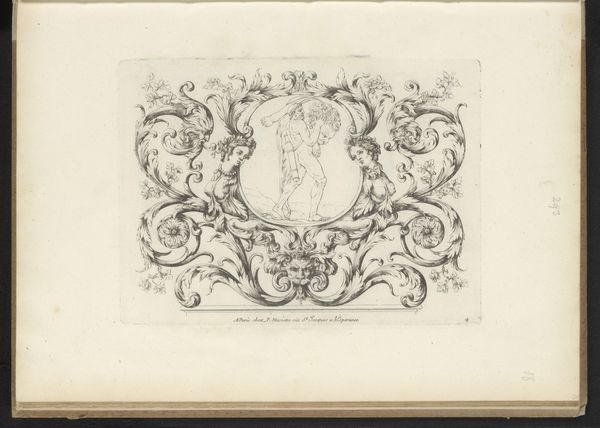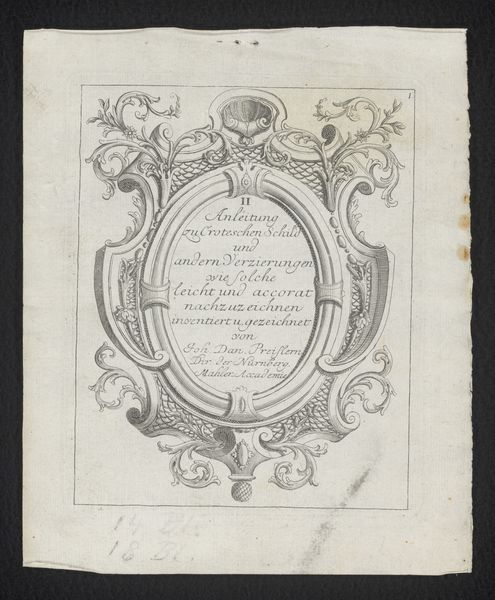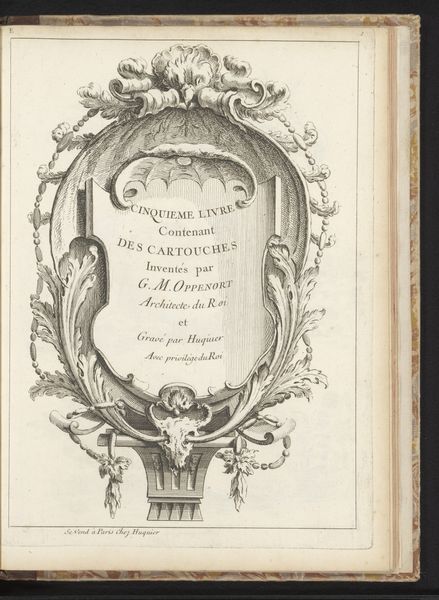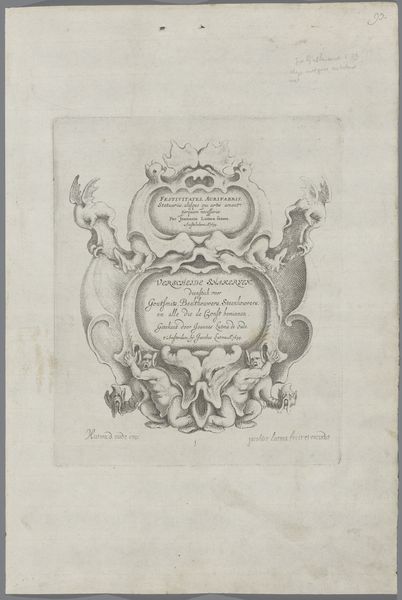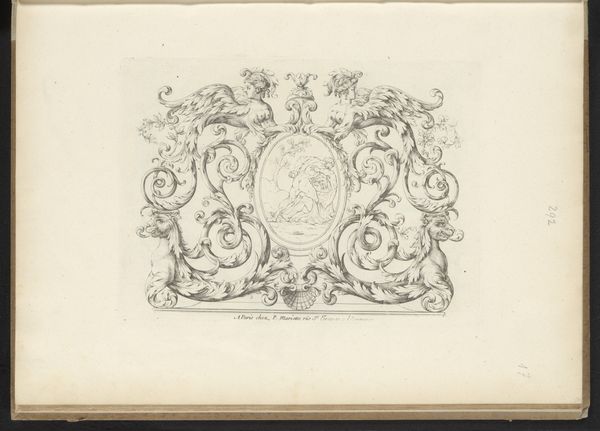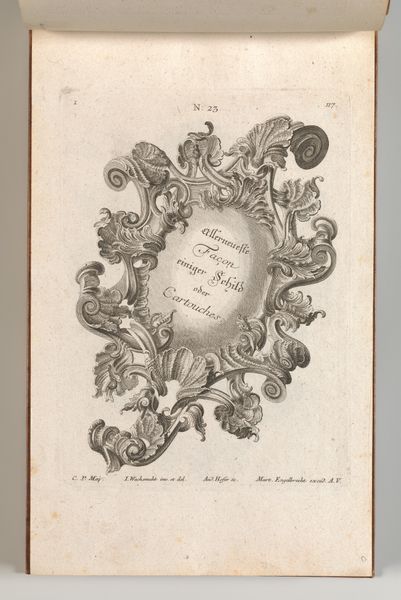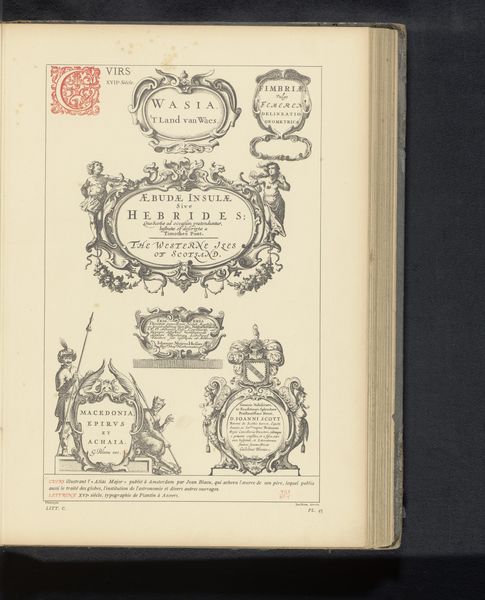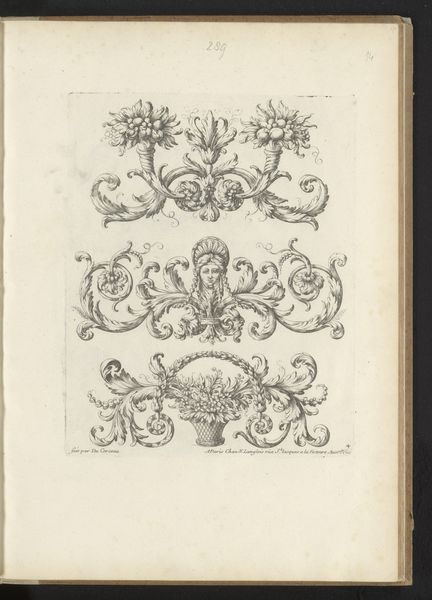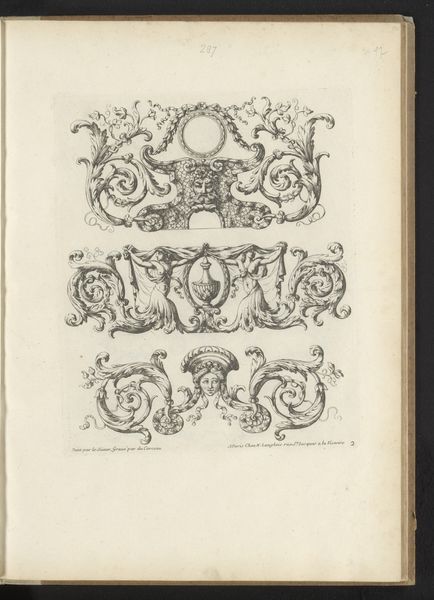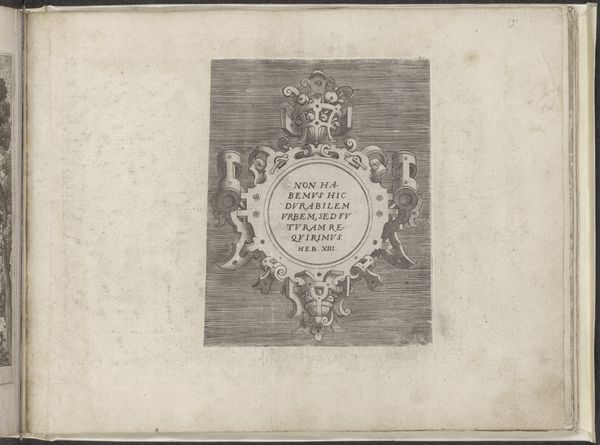
Drie cartouches met acanthusranken en marmeren inlegwerk c. 1670 - 1690
0:00
0:00
paulandrouetducerceau
Rijksmuseum
print, engraving
#
baroque
#
pen drawing
# print
#
geometric
#
line
#
decorative-art
#
engraving
Dimensions: height 263 mm, width 210 mm
Copyright: Rijks Museum: Open Domain
Paul Androuet Ducerceau created this print, "Three Cartouches with Acanthus Scrolls and Marble Inlay," sometime in the 17th century. The acanthus, a motif derived from the sharply lobed leaves of the acanthus plant, dominates the design. This motif, born in ancient Greece, first adorned the capitals of Corinthian columns, symbolizing prosperity and endurance. But observe how it resurfaces here, no longer a mere structural component but an exuberant flourish, a dance of form that captures the eye. Its transformation echoes through time, appearing in Roman friezes, Renaissance paintings, and even modern-day logos. The acanthus embodies a collective memory, a symbolic language passed down through generations. It speaks to our subconscious understanding of nature's abundance and humanity's aspiration for permanence. Its enduring appeal reflects our deep-seated need to connect with the past, to find continuity in the ever-changing present. The cyclical progression of this symbol reminds us that history is not linear but a constant return and reinvention.
Comments
No comments
Be the first to comment and join the conversation on the ultimate creative platform.
